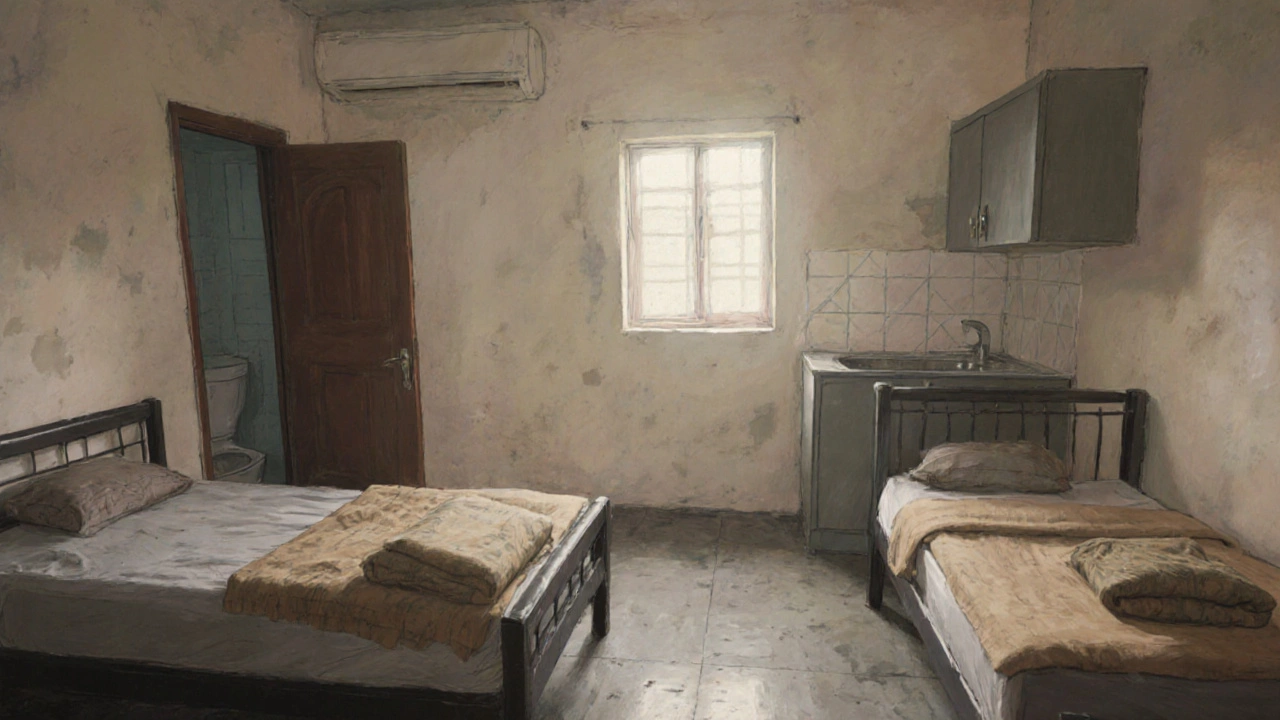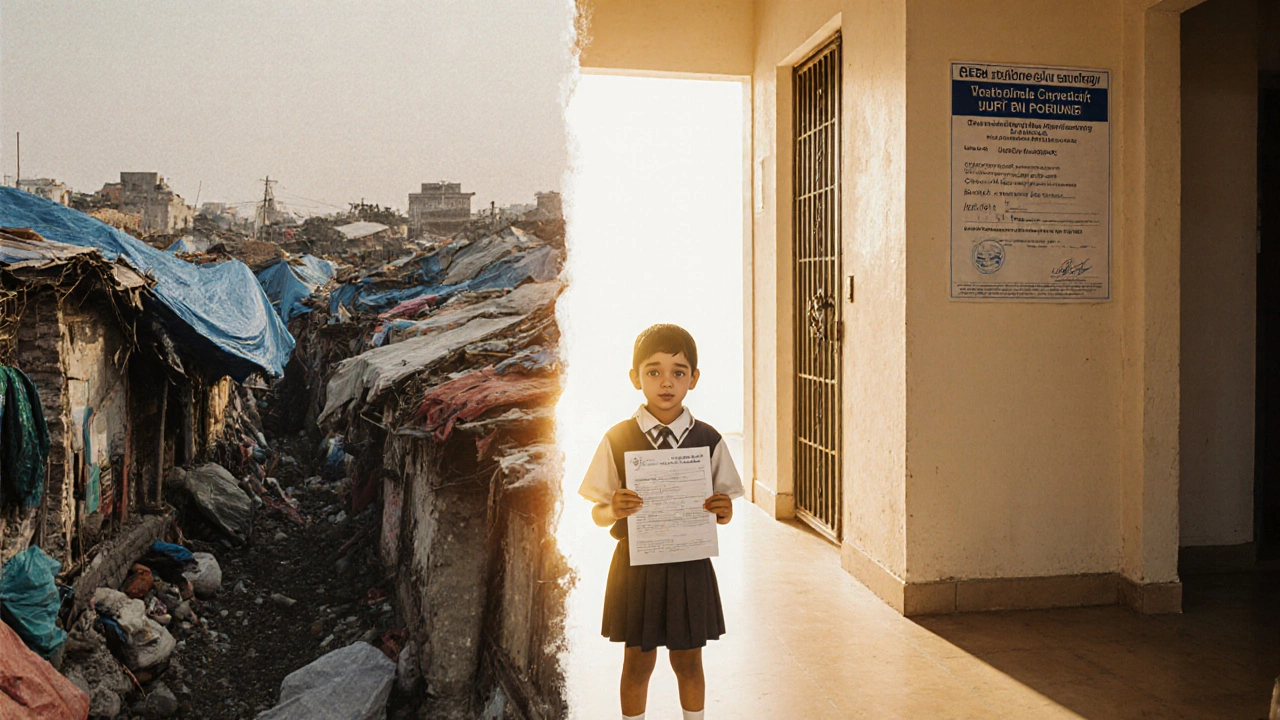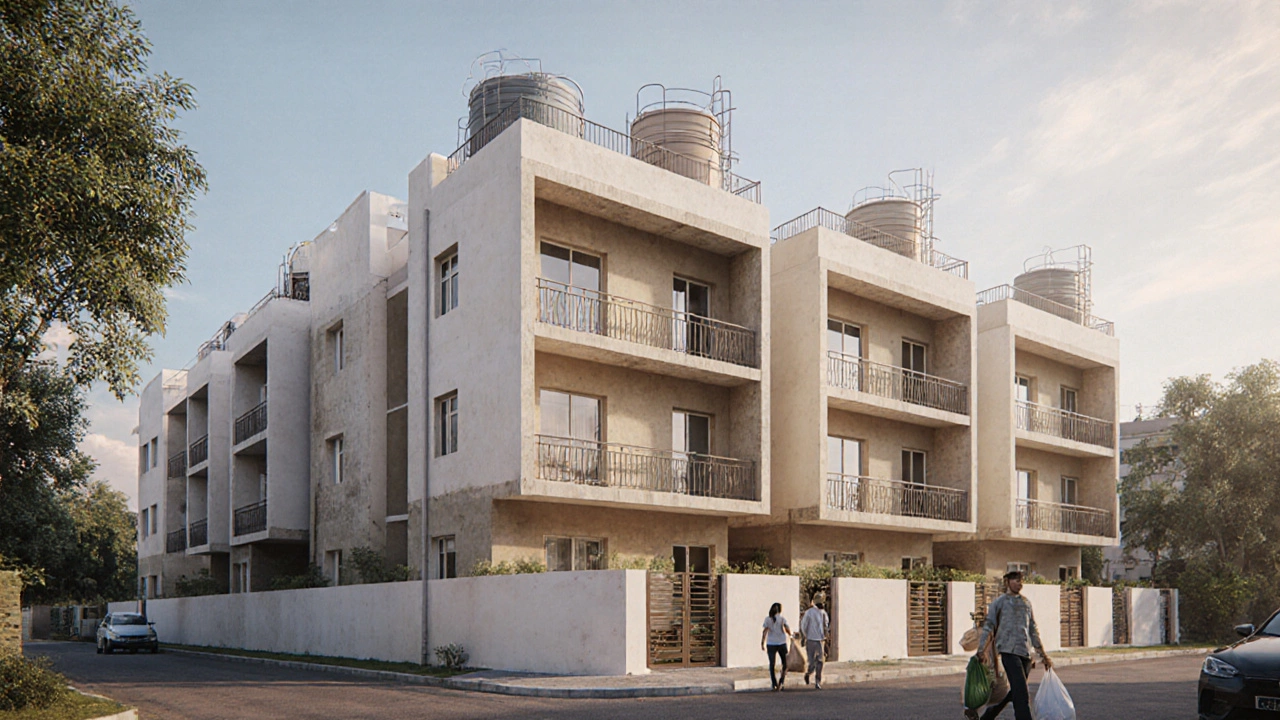PMAY Subsidy Calculator for Class D Homes
Calculate Your PMAY Subsidy
Find out how much subsidy you could qualify for under Pradhan Mantri Awas Yojana for Class D affordable housing.
Subsidy Estimate
Your subsidy amount will appear here...
Check your eligibility criteria
When you hear the term class D home, it doesn’t mean a run-down shack or a condemned building. In real estate, especially in cities across India, it’s a formal category used to describe a specific type of affordable housing-often a 2BHK apartment-that meets minimum standards for safety, sanitation, and occupancy but isn’t built to premium or luxury specifications. These homes are common in government-backed housing schemes, urban renewal projects, and mid-tier private developments targeting first-time buyers and low-to-middle-income families.
What Exactly Makes a Home a Class D?
A class D home is defined by its function, not its finish. It’s designed to provide basic, habitable shelter with essential amenities. Think of it as the entry point into homeownership for people who can’t afford higher-tier properties. The key features include:
- Two bedrooms and one or two bathrooms (typically a 2BHK layout)
- Minimum 600-750 sq. ft. carpet area
- Basic finishes: cement floors, plain plaster walls, standard doors and windows
- Shared or community water supply and sewage systems
- Electricity connection with standard wiring
- No elevators, no clubhouses, no landscaped gardens
These homes are built to last 20-30 years with routine maintenance. They’re not meant to be showpieces. They’re meant to be lived in.
Why Class D Homes Exist
India’s urban population is growing fast. Millions of people move to cities every year looking for work, education, or a better life. But housing prices in cities like Pune, Hyderabad, Ahmedabad, and even smaller tier-2 towns have outpaced income growth. That’s where class D homes come in.
Government programs like Pradhan Mantri Awas Yojana (PMAY) explicitly target class D housing. Under PMAY-Urban, subsidies are given to developers who build homes under 60 sq. meters (about 650 sq. ft.) with basic infrastructure. These homes are sold at 30-50% lower prices than class A or B apartments. Without class D housing, many families would be stuck in informal settlements or overcrowded rentals.
Class D vs. Other Housing Classes
Housing in India is often classified into four tiers: A, B, C, and D. Here’s how they compare:
| Class | Typical Size | Finish Quality | Price Range (per sq. ft.) | Target Buyers |
|---|---|---|---|---|
| A | 1,000+ sq. ft. | High-end marble, modular kitchens, smart home features | ₹8,000-₹15,000+ | High-income professionals, NRIs |
| B | 800-1,000 sq. ft. | Good quality tiles, branded fixtures, elevators | ₹5,000-₹8,000 | Middle-income families, dual-income couples |
| C | 650-800 sq. ft. | Standard tiles, basic fittings, no luxury features | ₹3,500-₹5,000 | Young professionals, first-time buyers |
| D | 550-700 sq. ft. | Basic cement, minimal finishes, shared amenities | ₹2,000-₹3,500 | Low-to-middle income, government scheme beneficiaries |
Class D homes sit at the bottom of this ladder-not because they’re unsafe, but because they’re stripped down to essentials. They don’t have parking slots for every unit, nor do they have security guards on 24/7 duty. But they do have functioning toilets, running water, and legal titles.

Who Buys Class D Homes?
The buyers are often young couples starting out, single parents, or migrant workers who’ve saved for years. Many are first-time buyers who qualify for PMAY subsidies. In cities like Indore or Bhopal, a class D 2BHK apartment can cost as low as ₹18-25 lakhs after subsidy. That’s less than the price of a used car in metro cities.
These homes are also popular among families who need a stable address for school admissions, bank loans, or government ID verification. Even if they plan to upgrade later, owning a class D home gives them legal standing in the city.
What to Watch Out For
Not every project labeled as “affordable” is a true class D home. Some developers use the term loosely to sell poorly constructed units. Here’s how to avoid traps:
- Check if the project has RERA registration. Unregistered projects often skip basic safety norms.
- Ask for the occupancy certificate. Without it, the building isn’t legally habitable.
- Verify water and sewage systems. Many class D projects cut corners here-look for individual connections, not shared tanks.
- Confirm the carpet area. Some builders inflate super built-up area to make prices seem lower.
- Check the builder’s track record. Look for complaints on RERA portals or local buyer forums.
A class D home isn’t a bargain if it’s unsafe. It’s a home if it meets minimum standards.

Can You Upgrade a Class D Home?
Yes, and many people do. Since the structure is solid, you can renovate interiors over time. Replace cement floors with tiles, install modular kitchens, add better windows, or even convert a balcony into a small study. These upgrades don’t change the class of the home legally, but they make it feel more like your own.
Some buyers treat class D homes as a stepping stone. They live in it for 5-7 years, save money, then sell it to buy a class B unit. The resale market for class D homes is growing, especially near metro rail lines or IT parks.
The Bigger Picture
Class D homes aren’t glamorous. But they’re essential. Without them, millions of people would have nowhere to live. They’re the foundation of urban housing in India-not the top floor, but the ground floor.
When you see a class D 2BHK apartment, don’t judge it by its walls. Judge it by what it gives people: security, dignity, and a chance to belong in a city that’s often too expensive for them.
Is a class D home the same as a slum?
No. A class D home is a legally constructed, RERA-registered apartment with proper utilities and title deeds. Slums are informal settlements without legal recognition, basic sanitation, or water access. Class D homes are part of formal housing policy; slums are not.
Can I get a home loan for a class D apartment?
Yes, most banks and NBFCs offer home loans for class D homes, especially if they’re RERA-registered and have an occupancy certificate. Loan eligibility depends on your income, credit score, and the project’s approval status-not the housing class itself.
Are class D homes eligible for PMAY subsidies?
Yes, class D homes are the primary target of PMAY-Urban. Eligible buyers can receive up to ₹2.5 lakhs in subsidy if they’re first-time homeowners and their annual income is below ₹18 lakhs. The subsidy is directly credited to the builder’s account.
Do class D homes appreciate in value?
They appreciate slower than premium properties, but they do. In cities like Jaipur, Surat, or Coimbatore, class D homes have seen 6-9% annual price growth over the last five years. Appreciation is tied to infrastructure development-like metro lines, new roads, or schools nearby.
Can I rent out a class D home?
Yes, many owners rent out their class D apartments. Rental yields are typically 4-6% annually, higher than in luxury buildings. Tenants often prefer them for affordability and proximity to workplaces. Just make sure the sale agreement allows renting.
Final Thought
A class D home isn’t the end of the road-it’s the first step. For many, it’s the difference between renting in a crowded chawl and owning a door that locks. It’s not about luxury. It’s about stability. And in a country where housing is still out of reach for too many, that matters more than you think.
